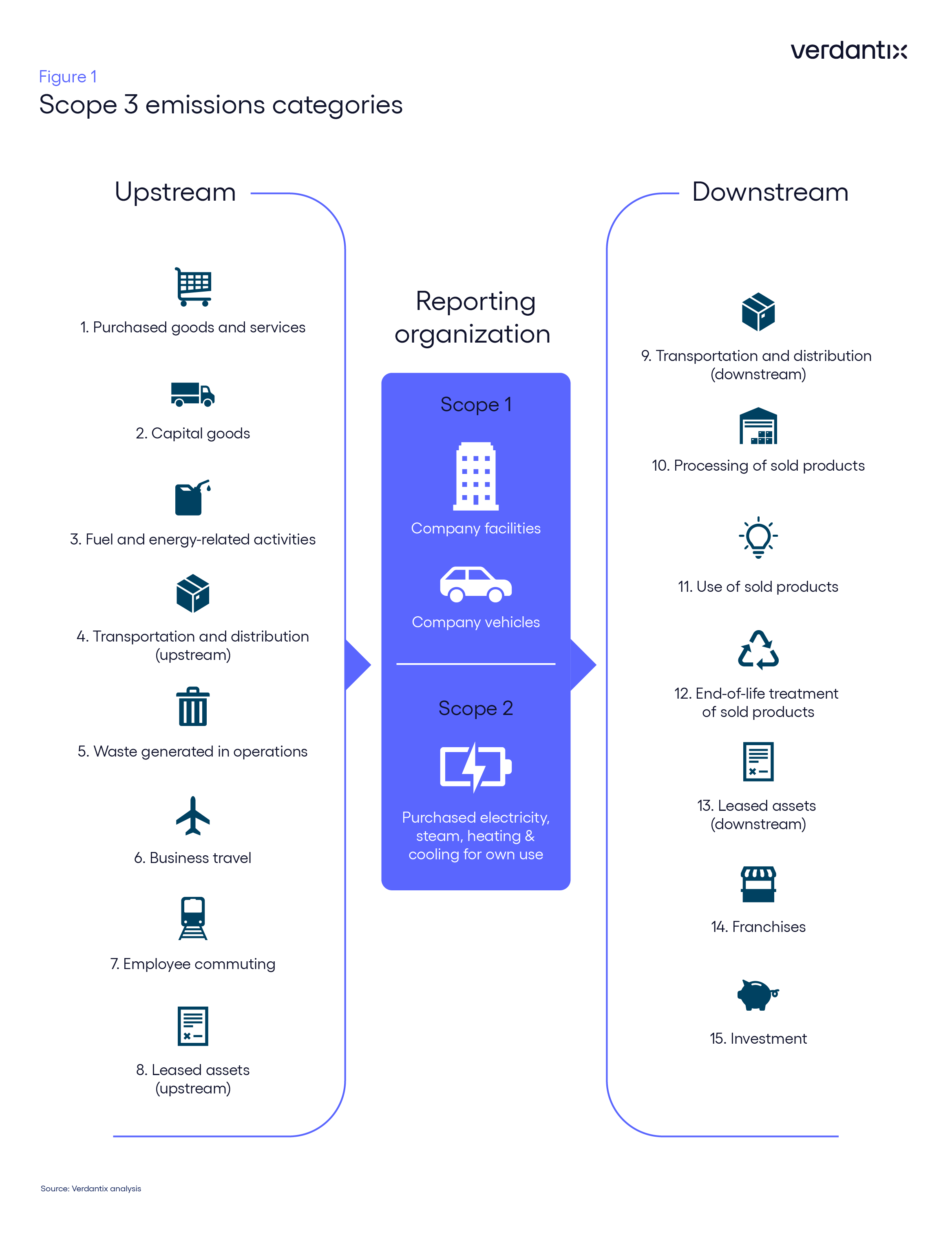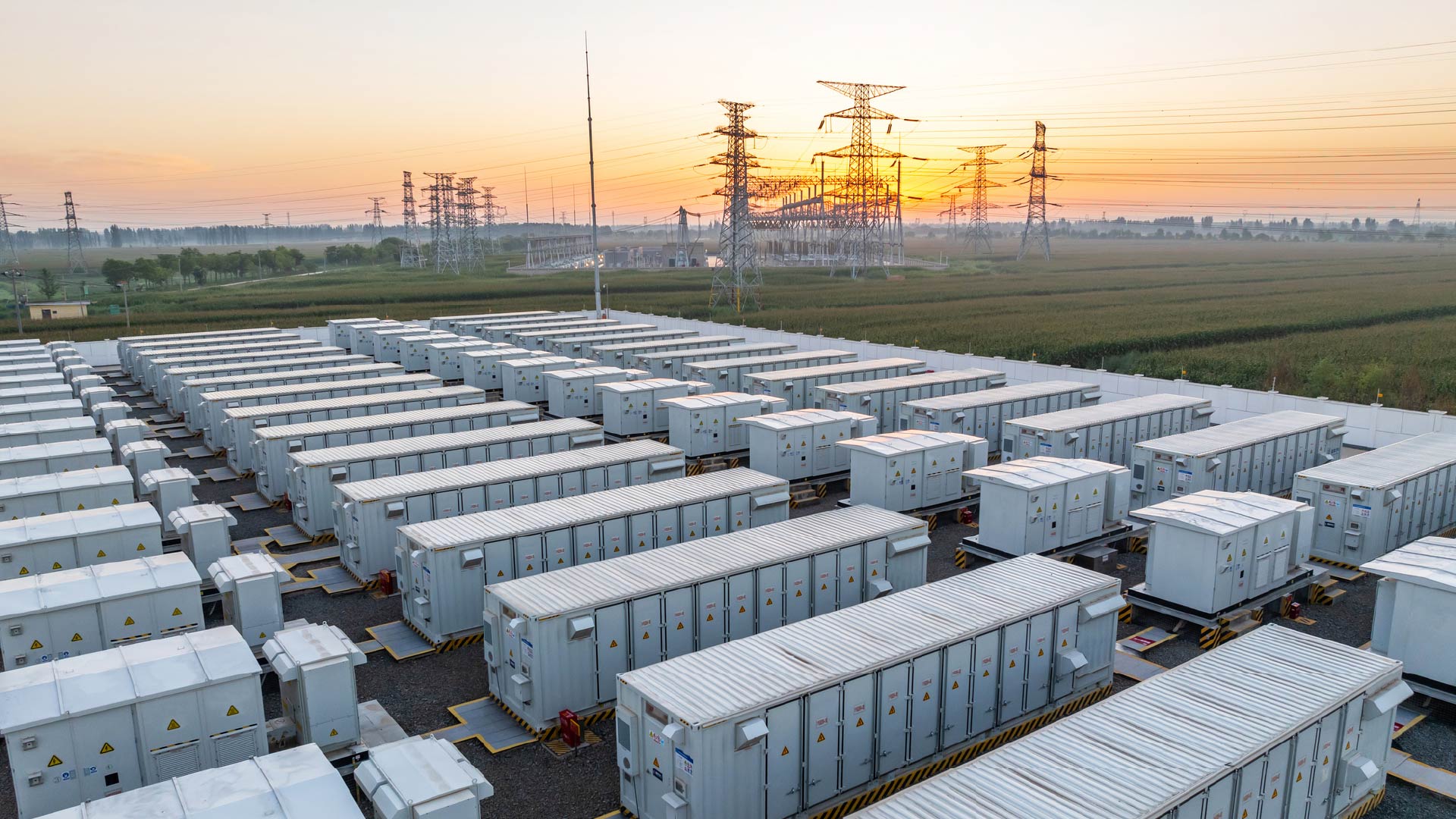Scope 3 Emissions: What Are They And Why Are They Important?

Gus Brewer
The carbon management landscape is intricate and filled with a myriad of technical terms and categories for organizations to navigate. One of these terms is Scope 3 – but what are Scope 3 emissions and why are they significant?
The Greenhouse Gas (GHG) Protocol categorizes emissions into three Scopes to help organizations measure their total emissions. Scope 1 covers direct emissions – all emissions from owned or controlled sources. Scope 2 covers indirect emissions from the purchase and use of electricity, steam, heating and cooling.
Finally, Scope 3 emissions encompass all indirect emissions occurring within a firm’s value chain and can be broadly divided into 15 categories: 8 categories of emissions originating from upstream activities and 7 categories originating from downstream activities (see below).
 Scope 3 emissions are important to measure because they often represent the largest portion of a firm’s total emissions. According to the CDP, Scope 3 emissions account for 75% of an organization’s total emissions on average. Ensuring firms measure these emissions means they have a more complete picture of their carbon footprint. As a result, decision-makers can identify key areas of emission reductions throughout their value chain, meet growing regulatory demands such as the CSRD in Europe, and satisfy stakeholder demands for transparency and accountability around emissions.
Scope 3 emissions are important to measure because they often represent the largest portion of a firm’s total emissions. According to the CDP, Scope 3 emissions account for 75% of an organization’s total emissions on average. Ensuring firms measure these emissions means they have a more complete picture of their carbon footprint. As a result, decision-makers can identify key areas of emission reductions throughout their value chain, meet growing regulatory demands such as the CSRD in Europe, and satisfy stakeholder demands for transparency and accountability around emissions.
Despite its importance, Scope 3 emissions calculations can be a challenging task. In particular, organizations struggle with:
- Complexity and scope of data collection.
Scope 3 emissions encompass a broad array of activities as shown above. Firms do not always have perfect visibility on complex supply chains, which means developing a standardized approach can be burdensome.
- Data availability.
Because Scope 3 emissions are not within a firm’s direct control, it can be difficult to collect data, as this is dependent on suppliers’ willingness and ability to provide emissions data.
- Poor data quality.
Gaps in data mean organizations often rely on estimates and assumptions to create emissions reports. This can lead to uncertainties in data quality and output where estimates are inaccurate, potentially providing misleading information.
- Dynamic supply chains.
Firms’ supply chains are complex and changing. Keeping emissions data up-to-date in such a fluid environment can be complicated and resource-intensive.
To meet the rising demand for Scope 3-specific carbon management, a range of vendors have introduced tailored products or added components to existing platforms, through partnerships, acquisitions or product development (see Verdantix Green Quadrant: Enterprise Carbon Management Software 2023). Capabilities such as supplier engagement portals, hot spot analysis and regulatory compliance modules all help to alleviate the burden of Scope 3 data collection and reporting, allowing organizations to focus resources on enacting meaningful decarbonization strategies.
To learn more about Scope 3 emission reduction strategies, please see our recent webinar Scope 3 Measurement: Mastering Emissions Reduction Strategies for Net Zero Success.
About The Author

Gus Brewer
Analyst





